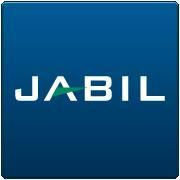Scanfil Oyj
OMXH:SCANFL
Profitability Summary
Scanfil Oyj's profitability score is 52/100. We take all the information about a company's profitability (such as its margins, capital efficiency, free cash flow generating ability, and more) and consolidate it into one single number - the profitability score. The higher the profitability score, the more profitable the company is.
Score
We take all the information about a company's profitability (such as its margins, capital efficiency, free cash flow generating ability, and more) and consolidate it into one single number - the profitability score. The higher the profitability score, the more profitable the company is.
We take all the information about a company's profitability (such as its margins, capital efficiency, free cash flow generating ability, and more) and consolidate it into one single number - the profitability score. The higher the profitability score, the more profitable the company is.
Score
Score
Margins
Profit margins represent what percentage of sales has turned into profits. Simply put, the percentage figure indicates how many cents of profit the company has generated for each dollar of sale.
Profit margins help investors assess if a company's management is generating enough profit from its sales and whether operating costs and overhead costs are being contained.
Earnings Waterfall
Scanfil Oyj
|
Revenue
|
779.9m
EUR
|
|
Cost of Revenue
|
-506.7m
EUR
|
|
Gross Profit
|
273.3m
EUR
|
|
Operating Expenses
|
-221m
EUR
|
|
Operating Income
|
52.2m
EUR
|
|
Other Expenses
|
-13.6m
EUR
|
|
Net Income
|
38.6m
EUR
|
Margins Comparison
Scanfil Oyj Competitors
| Country | Company | Market Cap |
Gross Margin |
Operating Margin |
Net Margin |
||
|---|---|---|---|---|---|---|---|
| FI |
S
|
Scanfil Oyj
OMXH:SCANFL
|
567.2m EUR |
35%
|
7%
|
5%
|
|
| TW |

|
Hon Hai Precision Industry Co Ltd
TWSE:2317
|
1.9T TWD |
6%
|
3%
|
2%
|
|
| CN |

|
Foxconn Industrial Internet Co Ltd
SSE:601138
|
356B CNY |
7%
|
4%
|
4%
|
|
| CH |

|
TE Connectivity Ltd
NYSE:TEL
|
42.9B USD |
35%
|
19%
|
12%
|
|
| US |

|
Jabil Inc
NYSE:JBL
|
16B USD |
9%
|
5%
|
2%
|
|
| SG |

|
Flex Ltd
NASDAQ:FLEX
|
13.8B USD |
8%
|
4%
|
4%
|
|
| CA |

|
Celestica Inc
TSX:CLS
|
14.8B CAD |
11%
|
6%
|
4%
|
|
| CN |

|
Goertek Inc
SZSE:002241
|
72B CNY |
11%
|
3%
|
3%
|
|
| KY |

|
Fabrinet
NYSE:FN
|
7.2B USD |
12%
|
10%
|
10%
|
|
| CN |

|
AAC Technologies Holdings Inc
HKEX:2018
|
43.4B HKD |
22%
|
9%
|
7%
|
|
| CN |

|
Wingtech Technology Co Ltd
SSE:600745
|
40.4B CNY |
10%
|
1%
|
-1%
|
Return on Capital
Return on capital ratios give a sense of how well a company is using its capital (equity, assets, capital employed, etc.) to generate profits (operating income, net income, etc.). In simple words, these ratios show how much income is generated for each dollar of capital invested.
Return on Capital Comparison
Scanfil Oyj Competitors
| Country | Company | Market Cap | ROE | ROA | ROCE | ROIC | ||
|---|---|---|---|---|---|---|---|---|
| FI |
S
|
Scanfil Oyj
OMXH:SCANFL
|
567.2m EUR |
14%
|
7%
|
16%
|
12%
|
|
| TW |

|
Hon Hai Precision Industry Co Ltd
TWSE:2317
|
1.9T TWD |
10%
|
4%
|
9%
|
9%
|
|
| CN |

|
Foxconn Industrial Internet Co Ltd
SSE:601138
|
356B CNY |
16%
|
8%
|
17%
|
17%
|
|
| CH |

|
TE Connectivity Ltd
NYSE:TEL
|
42.9B USD |
16%
|
9%
|
17%
|
11%
|
|
| US |

|
Jabil Inc
NYSE:JBL
|
16B USD |
25%
|
3%
|
22%
|
7%
|
|
| SG |

|
Flex Ltd
NASDAQ:FLEX
|
13.8B USD |
30%
|
9%
|
20%
|
18%
|
|
| CA |

|
Celestica Inc
TSX:CLS
|
14.8B CAD |
24%
|
7%
|
20%
|
10%
|
|
| CN |

|
Goertek Inc
SZSE:002241
|
72B CNY |
8%
|
3%
|
8%
|
6%
|
|
| KY |

|
Fabrinet
NYSE:FN
|
7.2B USD |
19%
|
15%
|
18%
|
27%
|
|
| CN |

|
AAC Technologies Holdings Inc
HKEX:2018
|
43.4B HKD |
8%
|
4%
|
8%
|
8%
|
|
| CN |

|
Wingtech Technology Co Ltd
SSE:600745
|
40.4B CNY |
-1%
|
-1%
|
1%
|
7%
|
Free Cash Flow
Free cash flow (FCF) is the money a company has left over after paying its operating expenses and capital expenditures. The more free cash flow a company has, the more it can allocate to dividends, paying down debt, and growth opportunities.
If a company has a decreasing free cash flow, that is not necessarily bad if the company is investing in its growth.















































 You don't have any saved screeners yet
You don't have any saved screeners yet
